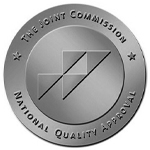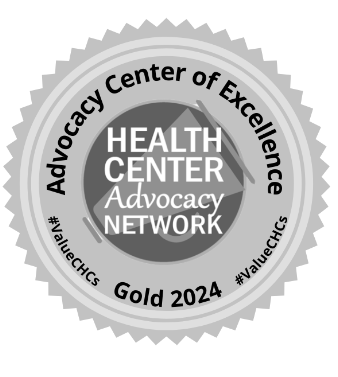
In America, healthy eating is not a top priority for most people. The vast majority of Americans are carrying extra weight, and even those who are in a healthy weight range often don’t have the best eating habits. A poor diet can contribute to a variety of health conditions including high blood pressure and cholesterol, heart disease, stroke and even some cancers.
In today’s article, Dr. Rebecca Patterson of Keystone Family Medicine gives some tips for avoiding diets and making healthy eating a part of your everyday lifestyle.
What’s wrong with dieting?
I don’t recommend traditional dieting as there are no quick magic fixes. Most diets promise rapid results by eliminating food groups or having rigid rules that will not be maintainable long-term. Instead, I encourage my patients to make healthy eating part of their lifestyle, and to find a balance they will be able to sustain long-term and feel good about.
One eating plan that I do recommend is the Mediterranean style of eating. It is high in fruits, vegetables, fish, olive oil, nuts and whole grains, and recommends that dairy, red meat and added sugars be consumed only occasionally or in smaller amounts. There is good evidence that following the Mediterranean eating style increases longevity and helps keep inflammation controlled, which is an important part of overall health. Another eating plan that shows great evidence for longevity and controlled inflammation is a whole-foods, plant-based diet. Studies show that 60% of chronic diseases could be prevented by diet changes that lower inflammation.
Are juices and diet sodas OK to drink?
Juice, even 100% juice, isn’t the healthiest option. Juice has concentrated sugar as the fiber has been removed from the fruit. Many juices have similar amounts of sugar as sodas. Eating a piece of fruit is a much better option than drinking a glass of juice. Diet sodas also aren’t healthy. While they may have no actual sugar, they are loaded with artificial sweeteners which spike insulin. The body has the same reaction to artificial sweeteners as it does to sugar, and the more of it you consume, the more the dopamine centers in your brain will crave it. There are also concerns about how artificial sweeteners affect the body long-term, and studies are currently underway.
No sweetened drinks are healthy, including sweet tea. Instead, opt for water or unsweetened tea. Most people are not drinking enough water. I do not recommend the water flavoring packets or liquids which are available at grocery stores as they contain artificial sweeteners. If you want to add flavor to your water, try a fruit or cucumber slice instead.
Is sugar or salt worse for you?
For most people, lowering their sugar intake is most important. Sugar has been linked to cancer, diabetes, hypertension and more. It is also highly addictive. In research, mice have shown higher levels of addiction to sugar than to cocaine.
Excess salt or sodium intake is not recommended, but unless you have heart conditions, high blood pressure or some other medical concerns it is generally not as big of a problem. However, you should still be mindful about how much salt you are eating. Don’t buy pre-salted foods, limit processed foods (which are often high in sodium) and add salt to meals after cooking instead of before.
What’s the microbiome?
The microbiome, in short, is the bacteria in our guts. This is an exciting area of research showing that proper nutrition may not only be about what we consume, but what our bodies absorb. Everyone’s body absorbs nutrition differently and can be affected by many different factors. In the future, the research that is currently underway may help us better craft eating plans specifically designed for individuals.
What should I keep in mind when trying to change my eating habits?
Healthy eating should focus on what options are available, instead of focusing on restrictions. It’s best to eat fewer foods that are processed and more whole foods that are recognizable without changing their forms. Processed foods do not give our bodies the nutrients we need, and nutrition is the most fundamental part of health and is used for everything our bodies do. Increase your intake of fiber and healthy fats (such as vegetables, fish and nuts), and decrease the amount of sugar, high fructose corn syrup, pre-packaged foods and simple carbs that you eat. (Examples of simple carbohydrates include bagels, donuts, white bread and white pasta). High fructose corn syrup, a type of added sugar, has been linked to the obesity epidemic and like sugar is highly addictive. Foods with preservatives also have a negative effect on many people, and can lead to gastrointestinal issues.
It’s important to keep in mind that it takes a long time to change your eating habits. If you are used to eating a highly-processed or sugar-filled diet, many fruits and vegetables may not taste very good to you at first. It takes a while for your taste buds to adjust, and adding them into your diet gradually may help the transition be easier. Don’t feel like you can never eat your favorite treats again. But keep them as that – an occasional treat – as opposed to eating them every day.
What if I don’t have the time or money to cook healthy meals?
We live in a culture of convenience, and finding the time to eat healthy can feel overwhelming. In today’s society, many people work long hours at multiple jobs, are busy with kids and often have little support. Most people feel they do not have enough time or energy left to prepare healthy meals. However, making small changes can make a big difference. Limiting junk food at home and replacing it with healthier options is a great place to start. Drink water instead of juice or soda and eat real fruit instead of fruit snacks. Instead of sugary breakfast cereals, try yogurt with granola and fruit (make sure you are buying low-sugar products – many yogurts and granolas have added sugars). Swap white pasta for whole-grain pasta. Instead of reaching for cookies, try veggies with hummus or an apple with peanut butter. When you buy fruits or vegetables, it’s helpful to cut them into bite-sized pieces that same day so they are easy to take on-the-go.
As a working mom myself, I find it helpful to plan my meals for the week ahead of time, and to set aside a specific time each week to cook. Those meals can then easily be reheated for a quick, healthy dinner. Allowing your children to be part of this process may encourage them in your new habits. Let them pick which vegetable you’ll have, or assist with simple cooking tasks.
If money is tight, it can be extra tempting to opt for a cheap drive-through meal instead of one with fresh ingredients. However, you don’t have to spend a lot of money to eat healthy foods. Watch for good deals at the store and stock up on foods that you can freeze or can. When you have a day off, cook a large amount of food in advance. Dinner leftovers make great lunches! Frozen fruits and vegetables are often more affordable for produce that is not in-season. For produce that is in-season, farmers markets offer good prices and allow you to support the local economy. Chambersburg has a great outdoor farmers market on Saturday mornings – North Square Farmers Market – which even offers kids tokens to exchange for free produce each week! There are other great markets in Chambersburg and our surrounding towns well, some of which offer weekday and evening hours.
Making the adjustment to healthier eating is crucial to your and your family’s wellbeing. Children often carry their childhood habits into adulthood and eat the same foods they ate growing up. Make time to enjoy your meals together (never in front of the TV), and focus on which healthy foods you really enjoy instead of those which you should limit. If you are looking for some support on your journey to eating healthier, check out a local program called Healthy Eating Adventure (www.healthyeatingadventure.org), a 28-day program which helps people transition to making better nutrition choices.
By gradually changing your eating habits and making a few good choices each day, you can have a healthier and happier tomorrow.
This article contains general information only and should not be used as a substitute for professional diagnosis, treatment or care by a qualified health care provider.




